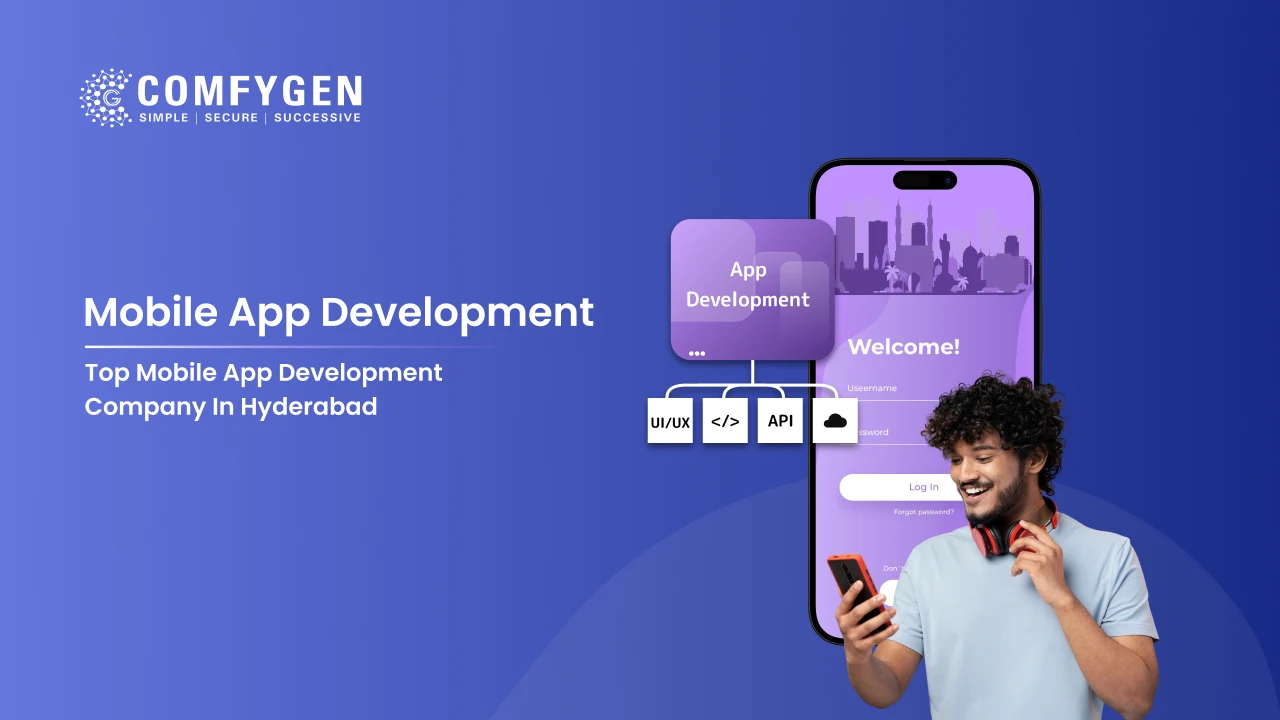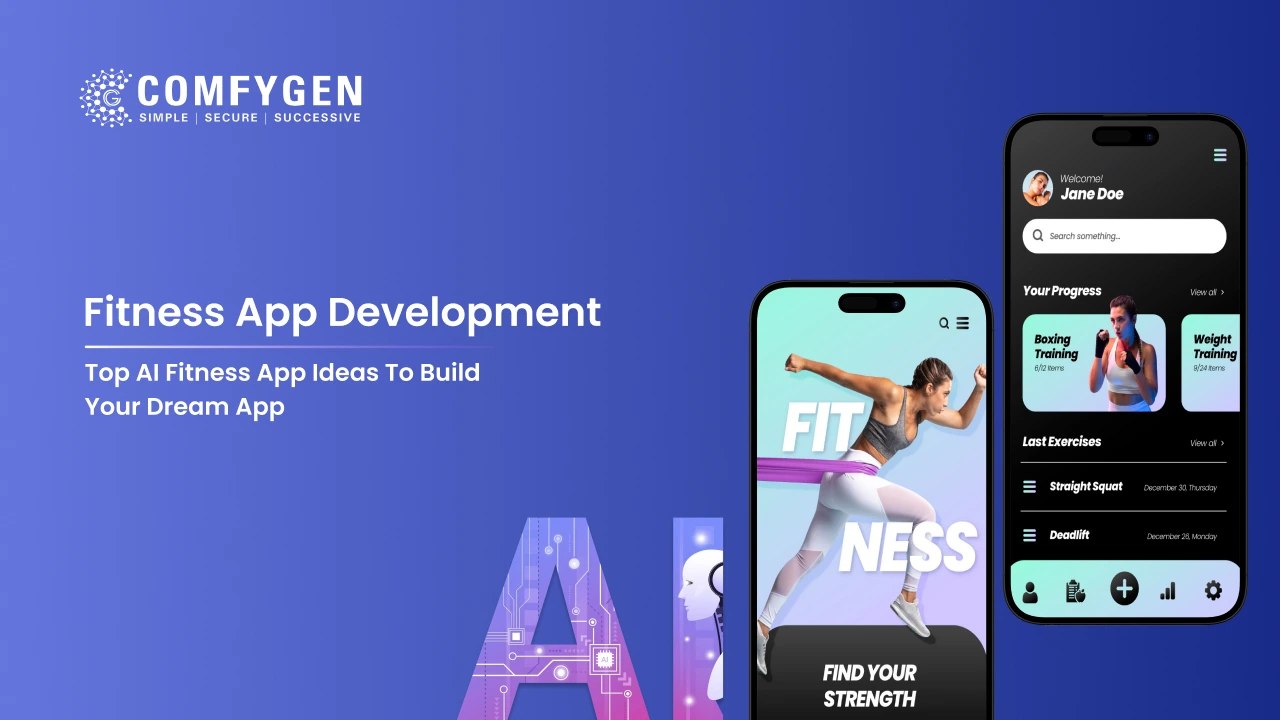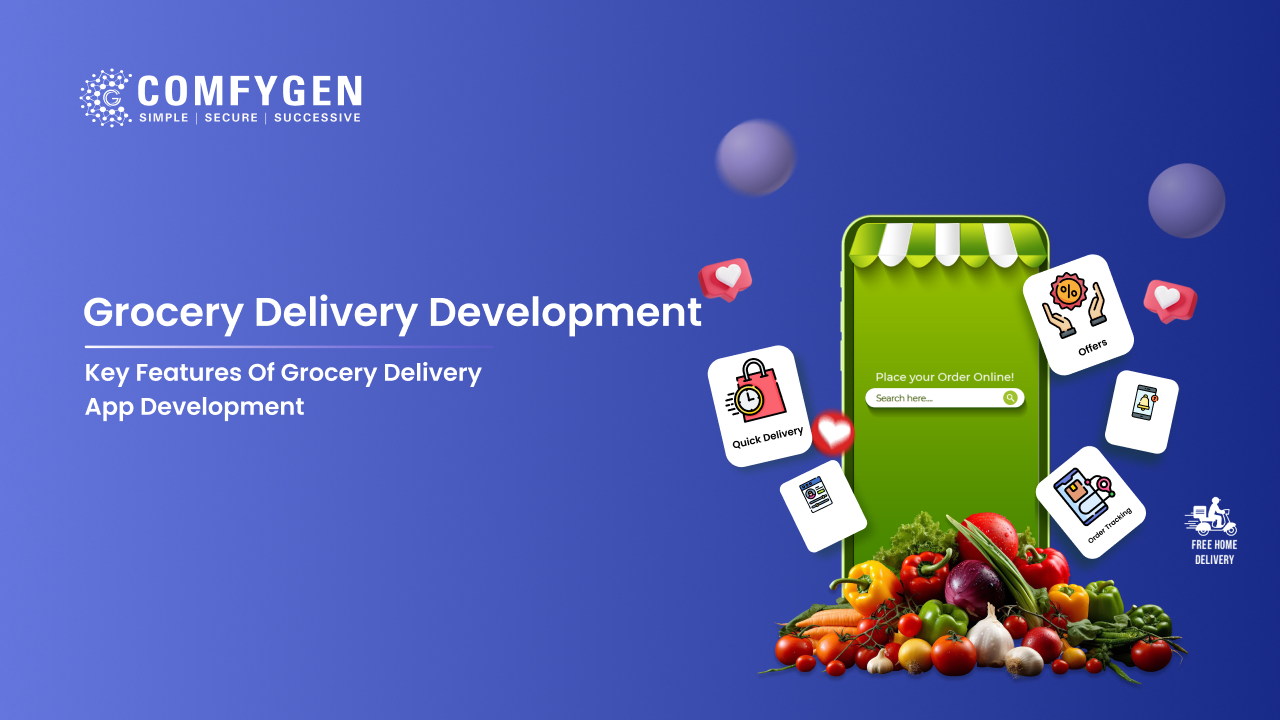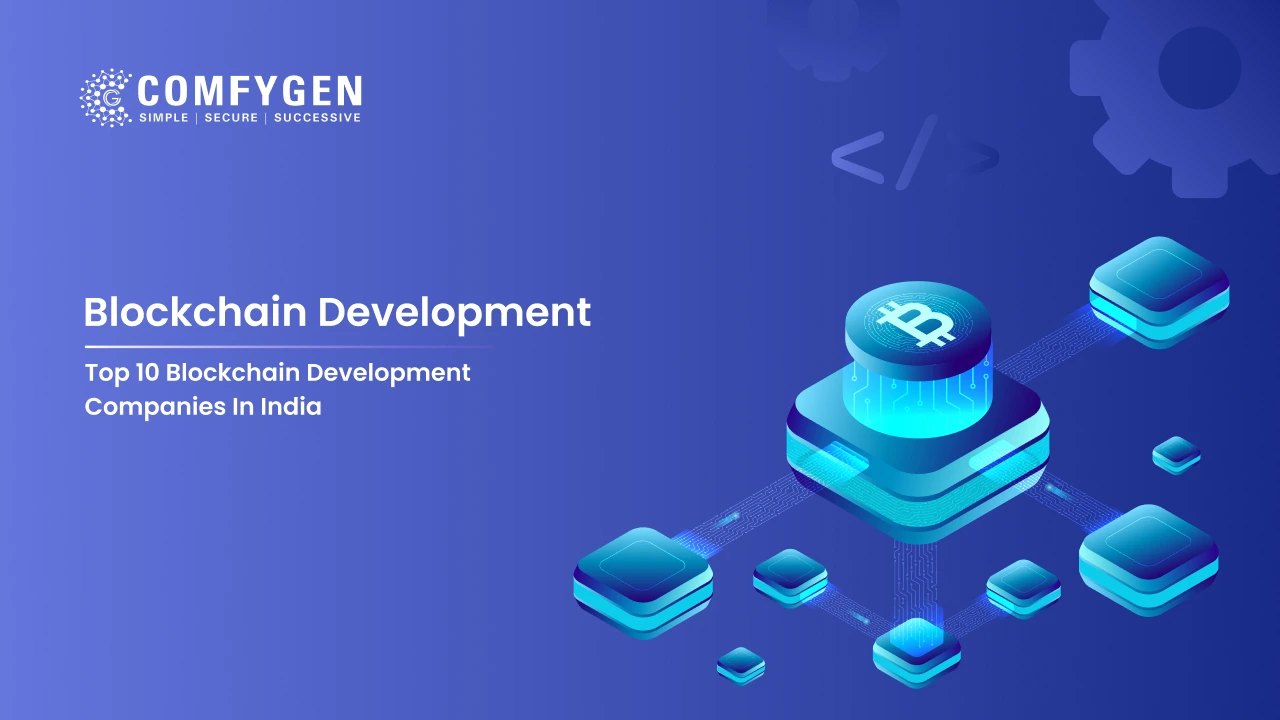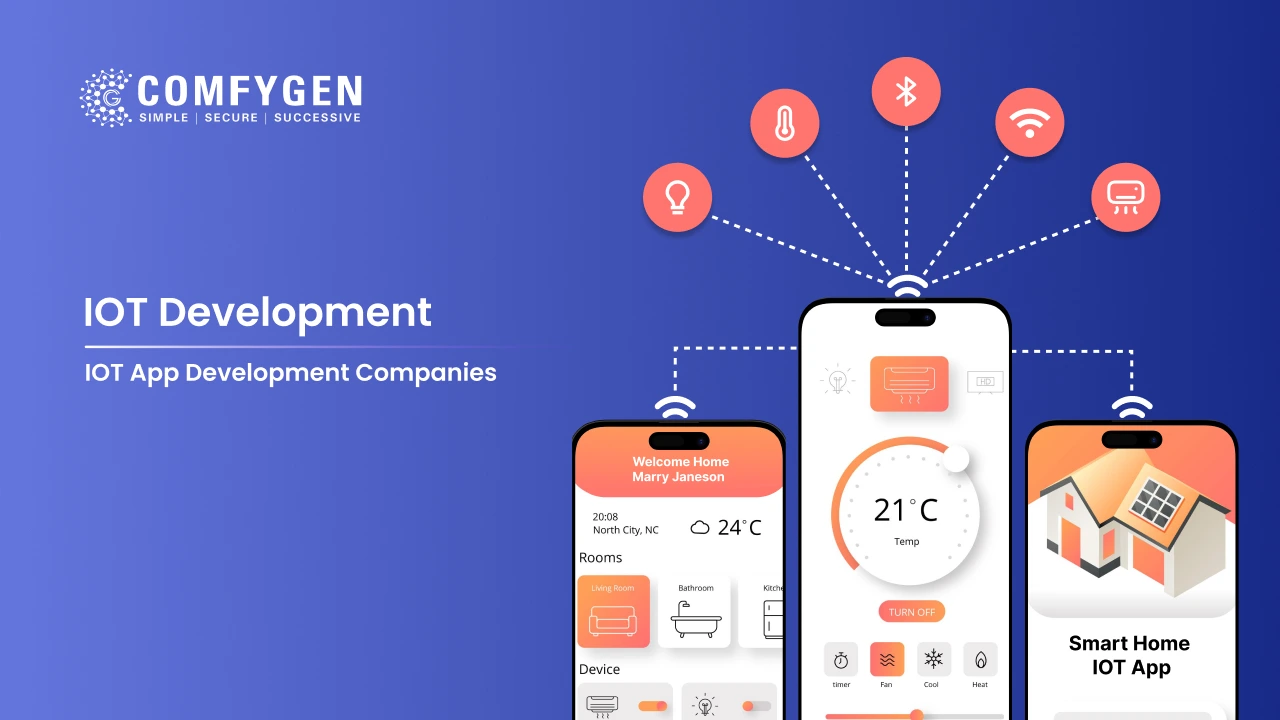Telehealth App Development Guide in 2026
The healthcare industry has changed faster in the last five years than in the previous twenty. Today, patients expect quick, affordable, and remote care options. Telehealth apps have become the backbone of virtual healthcare, connecting doctors and patients anytime, anywhere.
In this complete guide to Telehealth App Development, we will explain how telehealth apps work, their features, the development process, cost, technology stack, and why choosing the right telehealth app development company makes all the difference.
What Are Telehealth Apps?
Telehealth apps are digital platforms that allow patients and healthcare providers to connect remotely. Using these mobile telehealth apps, patients can consult with doctors, receive medical advice, and access health services without needing to visit a clinic or hospital. These apps often include features like video calls, messaging, appointment scheduling, and access to medical records.
Telehealth applications are designed to make healthcare more accessible and convenient, especially for those in remote areas or with mobility issues. They can also save time and reduce the need for in-person visits. By using telehealth apps, patients can get timely care, monitor chronic conditions, and maintain regular check-ups from the comfort of their homes.
What Is Telehealth App Development?
Telehealth app development refers to creating digital platforms that allow patients and doctors to connect remotely using video calls, voice calls, live chat, or AI-powered tools. These apps help users book appointments, consult healthcare professionals, receive e-prescriptions, and access medical history online.
Telemedicine app development is specifically focused on remote clinical services, while telehealth covers a wider scope, including:
-
Online consultation
-
Remote patient monitoring (RPM)
-
Digital health records
-
Mental health services
-
Chronic disease management
Telehealth apps improve patient outcomes, reduce hospital crowding, and make healthcare more accessible, especially in rural and underserved areas.
Why Telehealth Apps Are Growing Fast
Telehealth adoption increased after COVID-19, and the growth continues strongly.
Main reasons include:
-
Busy lifestyles demand quick access to healthcare
-
Rising use of smartphones and mobile apps
-
Improved mobile internet and 5G technology
-
Hospitals adopting digital transformation
-
Growing interest in AI healthcare solutions
By 2030, the global telehealth market is expected to reach $455 billion, and developing a telehealth app is now a profitable business idea for healthcare providers, startups, and entrepreneurs.
Importance of Telehealth Apps in Modern Healthcare
The telehealth apps can revolutionize the healthcare industry and are potent enough to give it a futuristic approach. It improves the efficiency, accessibility, and adds more convenience to healthcare professionals & patients. However, these telehealth app solutions show their true significance during the major chronic diseases; which require regular monitoring.
To understand the significance of telehealth in modern healthcare with more clarity, let’s acknowledge the reasons to use it. The benefitted reasons are enough to explain the value of apps in the industry:
Increased Accessibility
Telehealth apps make it easier for people in rural or remote areas to get medical care. Instead of traveling long distances to see a doctor, patients can consult with healthcare providers from the comfort of their homes. This is especially helpful for those who have mobility issues or live far from medical facilities.
Convenience and Time-Saving
With telehealth apps, you can schedule appointments, consult with your doctor, and even get prescriptions without leaving your house. This saves time that would otherwise be spent in waiting rooms or traveling to and from the clinic. Plus, it’s super convenient for busy individuals who struggle to fit doctor visits into their hectic schedules.
Cost-Effective
Telehealth can reduce healthcare costs by cutting down on unnecessary in-person visits and hospital admissions. It’s more affordable for patients, too, as they save on travel expenses and can often find lower consultation fees compared to traditional visits. This makes healthcare more accessible to everyone.
Improved Patient Engagement
Telehealth apps often come with features that keep patients more engaged in their healthcare. You can easily access your medical records, get reminders for appointments and medications, and have direct communication with your healthcare provider. This encourages better adherence to treatment plans and proactive management of your health.
Enhanced Care Quality
By enabling continuous monitoring and quick consultations, telehealth apps help in early detection and timely treatment of medical issues. Patients with chronic conditions can be regularly monitored, reducing complications and improving overall health outcomes. This leads to a higher quality of care and better health management.
How Does a Telehealth App Work?
A telehealth app works like a virtual clinic, allowing patients to connect with doctors without visiting a hospital. A telehealth app brings the hospital to your mobile phone. The process is simple, fast, and completely digital. Here’s how a telehealth app works step by step:
Step 1: User Registration & Secure Login
The first step is creating an account on the app.
Users can sign up using:
-
Phone number
-
Email
-
Social media account
-
Insurance ID (optional)
Quick login and identity verification ensure the platform is safe for both patients and doctors.
Step 2: Find a Doctor & Book an Appointment
Once logged in, users can browse through verified doctor profiles.
They can see:
-
Specialization
-
Experience
-
Ratings
-
Consultation fees
-
Available time slots
After selecting a doctor, users choose a suitable time and book an appointment instantly.
Step 3: Join the Virtual Consultation
When the appointment time comes, the patient can start the consultation using:
-
High-quality video call
-
Audio call
-
In-app chat
During the consultation, the doctor can ask questions, review symptoms, check reports, and suggest tests if needed.
Step 4: Receive Digital Prescriptions & Medical Notes
After the consultation, the doctor sends a digital prescription directly inside the app.
Patients receive:
-
Medication details
-
Dosage instructions
-
Lab test recommendations
-
Follow-up guidelines
Digital records make it easy to track past consultations anytime.
Step 5: Make Secure Payments
Telehealth apps offer multiple payment methods, such as:
-
UPI / Wallet
-
Debit/Credit cards
-
Net banking
-
Insurance coverage (if supported)
Payments are protected with encryption to keep financial data secure
Step 6: Follow-Up Care & Remote Monitoring
For long-term care or chronic illness, the app provides tools for follow-up support.
Patients can:
-
Book follow-up visits
-
Share test reports
-
Monitor vitals using smart devices
-
Use AI-based symptom checkers
Doctors can track the patient’s health remotely using connected IoT and wearable devices.
Types of Telehealth Apps
Telehealth is not limited to video calls. Different healthcare needs require different types of digital solutions. Below are the most important and widely used types of telehealth apps:
Real-Time Video Consultation Apps
This is like having a face-to-face chat with your doctor, but through your phone or computer. Real-time interaction allows for video calls, voice calls, or live chats where you can discuss your symptoms, get a diagnosis, and receive immediate advice. It’s super convenient because you get instant feedback and can see your doctor without leaving your house.
Why they are important:
-
Saves time spent traveling to the hospital
-
Ideal for non-emergency issues
-
Helps doctors reach more patients in a day
-
Great for remote or rural users
Remote Patient Monitoring (RPM) Apps
Imagine having your health monitored regularly without having to visit the clinic. Remote monitoring uses devices like wearables or home health equipment to keep track of your vital signs, such as heart rate, blood pressure, or glucose levels. The data is sent to your healthcare provider, who can monitor your health trends and catch any issues early. This is great for managing chronic conditions.
Devices that connect with RPM apps include:
-
Blood pressure monitors
-
Glucose meters for diabetes
-
Smartwatches and fitness trackers
-
Oxygen level sensors
-
Heart rate and ECG monitors
How they help:
-
Doctors can check a patient’s health without physical visits
-
Early detection of health problems
-
Useful for senior citizens and chronic patients
-
Improves long-term care and treatment planning
Store-and-Forward Telemedicine Apps
Store-and-forward is all about sharing medical information without needing both parties to be present at the same time. You can send your medical records, images, or test results to a specialist, who will review them later and get back to you with their findings. It’s like emailing your doctor all your info and waiting for their response. This is particularly useful for getting second opinions or specialist consultations.
Common examples:
-
Dermatology (skin rashes, infections)
-
Radiology (X-ray, MRI, CT scans)
-
Pathology reports
-
Diet and nutrition plans
Benefits:
-
Saves time for both patients and doctors
-
Helps specialists review cases at their convenience
-
Allows second opinions without extra appointments
Mental Health Apps & Therapy Platforms
Mental health apps focus on emotional well-being and professional counseling. Users can connect with therapists, psychologists, or mental health coaches for guidance and support.
Popular features:
-
One-on-one therapy sessions
-
Mood tracking
-
Meditation and relaxation exercises
-
Chat-based counseling
-
Stress and anxiety management tools
Why they matter:
-
Mental health support anytime, anywhere
-
Helps people who feel uncomfortable visiting clinics
-
Encourages regular therapy with affordable plans
Telehealth Apps for Chronic Care
Chronic care apps are designed for long-term diseases such as:
-
Diabetes
-
Hypertension
-
Heart disease
-
COPD
-
Asthma
-
Kidney-related issues
What they offer:
-
Daily health tracking
-
Medicine reminders
-
Diet and lifestyle plans
-
Doctor follow-ups
-
Remote monitoring with smart devices
Pharmacy & Medication Delivery Apps
These apps integrate telehealth with on-demand medicine delivery. After the consultation, patients can instantly order medicines prescribed by the doctor.
Features include:
-
Uploading prescriptions
-
Ordering medicines
-
Tracking delivery
-
Refill reminders
-
Secure online payments
Why they are useful:
-
Full healthcare solution in one app
-
Helps patients who cannot visit a pharmacy
-
Faster access to essential medicines
Ready to Build Your Own Telehealth App?
Let’s Connect
Must-Have Features of a Telehealth App
A telehealth app should be easy to use, reliable, and secure because it handles sensitive health data and connects patients with doctors in real-time. Below are the essential features every telehealth app must include to deliver a smooth digital healthcare experience.
Patient App Features
These features focus on making healthcare simple and accessible for patients using the app.
Quick Registration & Easy Profile Setup
Patients should be able to sign up within seconds using their phone number, email, or social login. A simple onboarding process improves user satisfaction and encourages them to use the app more frequently.
Profiles store basic information like age, gender, health history, and insurance details.
Smart Doctor Search & Appointment Booking
Patients should be able to quickly find the right doctor using filters such as:
-
Specialization (cardiology, dermatology, pediatrics, etc.)
-
Consultation fees
-
Language preference
-
Gender preference
-
Ratings and reviews
-
Available time slots
Video, Voice & Chat Consultations
High-quality communication is the heart of telehealth apps.
Patients can connect with doctors in three ways:
-
Video call for face-to-face consultations
-
Voice call when video is not required
-
Chat-based consultation for quick questions or follow-ups
In-App Chat, Document Upload & File Sharing
Patients can share:
-
Medical reports
-
Prescription images
-
Lab test results
-
X-rays or scans
Prescription Management & Digital Records
After the consultation, patients receive a digital prescription directly in the app. They can easily view, download, or forward the prescription to pharmacies for medication delivery.
All past prescriptions and consultation history remain stored for future reference.
Secure Payment Gateway Integration
Patients should be able to pay smoothly using multiple payment methods:
-
Credit/Debit Cards
-
UPI
-
Net Banking
-
Mobile Wallets
-
Insurance-based payments (if applicable)
Doctor App Features
These features help healthcare professionals offer fast, organized, and effective virtual care.
Verified Doctor Profile & Professional Dashboard
Verification builds trust and ensures the platform maintains high-quality medical service standards.
Doctors create a profile that includes:
-
Qualifications
-
Specializations
-
Experience
-
Certificates
-
Consultation charges
Appointment Management & Scheduling Dashboard
This feature keeps consultations organized and reduces waiting time for patients.
Doctors can:
-
Manage their availability
-
View upcoming appointments
-
Reschedule or cancel sessions
-
Handle patient queues
Smart Digital Prescription Writing
Doctors can create digital prescriptions with easy-to-use templates.
This saves time, avoids handwriting errors, and ensures the patient receives clear instructions for medicines and tests.
Access to Patient Medical History
Instant access to medical history leads to accurate diagnosis and personalized treatment plans.
Doctors can view all previous medical data, such as:
-
Past prescriptions
-
Symptoms
-
Uploaded reports
-
Allergies
-
Ongoing medications
Earnings, Reports & Analytics
This helps them manage their practice more effectively.
Doctors can monitor:
-
Total consultations completed
-
Earnings received
-
Daily/weekly/monthly performance
-
Patient feedback ratings
Admin Panel Features
The admin panel powers the entire telehealth ecosystem. It ensures smooth platform operations for patients and doctors.
User Management (Doctors, Patients & Clinics)
This ensures only verified and trusted users are active on the platform.
Admins can:
-
Approve or reject doctor profiles
-
Manage patient accounts
-
Handle clinics and staff access
-
Review user activities
Payment, Billing & Commission Control
A transparent payment system keeps the platform trustworthy.
Admins oversee all financial activities such as:
-
Doctor payouts
-
Commission calculation
-
Refund management
-
Insurance claims (if integrated)
Security, Compliance & Data Protection
Admins also manage data encryption, user authentication, and secure storage to protect user privacy.
Since telehealth apps handle sensitive health data, the admin panel must ensure compliance with:
-
HIPAA
-
GDPR
-
HL7 / FHIR standards
Analytics Dashboard & Performance Tracking
The data insights help improve platform quality and user experience continuously.
Admins can monitor:
-
Total consultations
-
Active users
-
Revenue reports
-
App performance metrics
-
Doctor ratings
-
Most-used features
Advanced Features for Modern Telehealth Apps
Modern telehealth apps need more than basic video calls to stand out in today’s digital healthcare market. To create a competitive and future-ready platform, healthcare providers and startups must focus on advanced telehealth app features that improve accuracy, patient engagement, and overall care quality. These smart features also build trust and increase the value of your telehealth app development investment.
Below are the most impactful and in-demand advanced telemedicine features, explained in simple, informative language.
AI Symptom Checker
An AI Symptom Checker is one of the most powerful features in a modern telehealth app.
Users can enter symptoms, and the AI engine analyzes the data to provide possible conditions and recommended next steps.
Benefits:
-
Helps users understand their health before consulting a doctor
-
Reduces unnecessary appointments
-
Improves patient experience with quick answers
-
Acts as a smart pre-diagnosis tool
AI-Powered Health Chatbot
An AI Health Chatbot provides round-the-clock assistance without needing a human agent.
It can answer basic health questions, book appointments, guide users through symptoms, and share self-care tips.
Why it’s important:
-
Offers immediate help anytime
-
Reduces manual work for clinics
-
Improves patient engagement
-
Enhances overall app usability
IoT Device Integration for RPM
Integrating IoT devices makes the telehealth app a complete health monitoring ecosystem.
Patients can connect devices like:
-
Glucose monitors
-
Heart rate trackers
-
Blood pressure machines
-
Smart oxygen meters
-
ECG devices
How it helps:
-
Real-time monitoring for chronic disease patients
-
Continuous health tracking for seniors
-
Automatic alerts for doctors
-
Better long-term treatment management
Wearable Device Syncing
This allows the app to collect real-time health data, including heart rate, sleep patterns, steps, oxygen levels, and more.
Modern telehealth apps can sync with popular wearable devices such as:
-
Apple Watch
-
Fitbit
-
Samsung Health
-
Garmin Wearables
Advantages:
-
Great for fitness-focused telemedicine platforms
-
Helps doctors track lifestyle-based health patterns
-
Enhances accuracy of diagnosis and care plans
Cloud-Based Health Records (EHR/EMR)
Every telemedicine app must have secure cloud-based Electronic Health Records (EHR/EMR) to store patient data safely and efficiently.
What it includes:
-
Medical history
-
Lab reports
-
Prescriptions
-
Scans and imaging files
-
Doctor notes
Benefits:
-
Instant access to health records from any device
-
Smooth hospital-to-app data transfer
-
Faster decision-making for doctors
-
Easier long-term patient management
Multi-language & Localization
To make your telehealth app accessible worldwide, multi-language support is a must. It allows patients to use the app in their preferred language, improving comfort and understanding.
Why it matters:
-
Makes healthcare accessible to rural and global users
-
Helps telemedicine startups target multiple regions
-
Builds trust and improves user experience
Telemedicine App Security and Regulatory Compliance
When you develop a telehealth app, it is mandated to integrate regulatory compliance and security. These compliances make your applications friendly to governance:
Understanding Healthcare Regulations (HIPAA, GDPR)
Healthcare regulations like HIPAA (Health Insurance Portability and Accountability Act) in the U.S. and GDPR (General Data Protection Regulation) in the EU are crucial.
They make sure patient data is protected, privacy is maintained, and data breaches are prevented. Telehealth apps must comply with these regulations to avoid legal issues and ensure patient trust.
Ensuring Data Security and Privacy
Data security involves protecting patient information from unauthorized access, breaches, and cyber threats. Telehealth apps must use encryption, secure authentication, and regular security audits to safeguard data. Ensuring privacy means maintaining confidentiality and handling patient data responsibly, adhering to legal standards.
Compliance with Telehealth Standards
Telehealth standards involve guidelines for safe and effective virtual healthcare delivery. These standards include secure communication, accurate patient identification, and proper documentation.
Compliance makes sure that telehealth services are reliable, meet quality benchmarks, and provide consistent care across different platforms and providers.
Want to Develop Best Telehealth Mobile Application?
Telehealth App Development Process
Know the process of telehealth app development before you hand over the project. It would be better to know the process first, so that you will be aware of every ongoing stage during app development:
Market Research and Planning
Start by conducting thorough market research to understand the needs and preferences of your target audience. Identify key features and functionalities that will make your app competitive. Create a detailed project plan outlining the development timeline, budget, and resources required.
Define Requirements
Collaborate with healthcare professionals to define the app’s technical and functional requirements. This includes specifying user roles, security protocols, and compliance with healthcare regulations. Ensure the app addresses both patient and provider needs effectively.
Choose the Right Technology Stack
Select the appropriate technology stack for your telehealth app. This includes choosing the programming languages, frameworks, and tools that will ensure the app is robust, scalable, and secure. Consider future maintenance and updates when making these choices.
Design the User Interface (UI)
Create an intuitive and user-friendly UI that caters to both patients and healthcare providers. Focus on ease of navigation, accessibility, and a seamless user experience. Use wireframes and prototypes to visualize the app’s design and gather feedback before development.
Develop and Test the App
Begin the development process by coding the app’s features and functionalities. Conduct rigorous testing throughout the development cycle to identify and fix bugs. Perform usability testing to ensure the app is easy to use and meets user expectations.
Ensure Security and Compliance
Implement strong security measures to protect patient data, including encryption, secure authentication, and regular security audits. Ensure the app complies with healthcare regulations such as HIPAA and GDPR, as well as telehealth standards.
Launch and Monitor
Deploy the app to app stores and other distribution platforms. Monitor its performance using analytics tools to track user engagement, identify issues, and gather feedback. Use this data to make continuous improvements and updates to enhance the app’s functionality and user experience.
Provide Support and Maintenance
Offer ongoing support and maintenance to address any technical issues and ensure the app runs smoothly. Regularly update the app with new features, security patches, and improvements based on user feedback and technological advancements.
Choosing The Right Technology Stack For Custom Telemedicine App Development
Choosing the right technology stack is crucial for the success of your custom telemedicine app. It impacts the app’s performance, scalability, and user experience. Here’s a breakdown of what to consider for frontend, backend, and frameworks.
Frontend Technologies
The frontend is the part of the app that users interact with. It’s essential to choose technologies that ensure a smooth, responsive, and user-friendly interface. Popular frontend technologies include:
- HTML5 and CSS3: These are the building blocks of web design, providing structure and style to your app.
- JavaScript: For dynamic content and interactive features. Frameworks like React.js, Angular.js, and Vue.js are widely used for their efficiency and flexibility.
- Mobile-specific technologies: For mobile app development, you can use Swift for iOS and Kotlin for Android to ensure native performance and smooth user experience.
Backend Technologies
The backend is the server-side that handles data processing, storage, and business logic. Key technologies include:
- Node.js: Known for its scalability and speed, ideal for handling real-time data and high traffic.
- Python and Django: Great for rapid development and robust performance.
- Ruby on Rails: Offers simplicity and convention over configuration, making development faster.
Choosing the Right Frameworks
Frameworks provide a structured foundation to build your app efficiently. For telemedicine apps, consider:
- React Native: Allows you to build cross-platform apps with native performance using JavaScript.
- Flutter: Developed by Google, it enables you to create visually appealing apps for both iOS App and Android App from a single codebase.
- Firebase: A comprehensive app development platform by Google that offers backend-as-a-service, real-time databases, authentication, and analytics.
Choosing the right technology stack ensures your custom telemedicine app development services is reliable, scalable, and user-friendly. It’s essential to align your technology choices with your app’s requirements, budget, and long-term goals. Working with experienced developers can help you make the best decisions and build a successful telemedicine app.
Advanced Technologies Used for Telehealth App Development
It is beneficial to implement some of the latest technology trends during telehealth app development. These trending tech-enabled benefits will help engage the end-users more:
AI and Machine Learning
Artificial Intelligence and Machine Learning enhance telehealth apps by providing predictive analytics, personalized treatment recommendations, and automated patient triage. These technologies can analyze patient data to identify patterns and trends, improving diagnosis accuracy and patient outcomes.
Remote Monitoring
Leveraging advanced sensors and wearable devices, remote monitoring continuously tracks patients’ vital signs and health metrics. This real-time data is sent to healthcare providers, enabling early detection of potential issues and timely interventions, especially for chronic disease management.
Data Analytics
Data analytics processes vast amounts of health data to uncover valuable insights. It helps healthcare providers make informed decisions, identify trends, and improve patient care. By analyzing data, telehealth apps can offer personalized healthcare plans and enhance overall efficiency.
Integration with Electronic Health Records (EHRs)
Integrating telehealth apps with EHRs ensures seamless access to comprehensive patient medical histories. This integration allows healthcare providers to make more informed decisions, streamline workflows, and maintain continuity of care across different healthcare settings.
Blockchain Technology
Blockchain enhances data security and privacy in telehealth apps by providing a decentralized and tamper-proof system for storing patient information. It ensures that medical records are secure, transparent, and only accessible to authorized users, reducing the risk of data breaches.
Internet of Things (IoT)
IoT connects various medical devices and sensors to telehealth apps, enabling real-time monitoring and data collection. This connectivity allows for continuous health tracking, automatic alerts for abnormal readings, and improved patient engagement in managing their health.
Want to See a Demo of a Telemedicine Application?
Cost to Develop a Telehealth App in 2026
The cost of telehealth app development can vary widely depending on several factors. On average, developing a basic telehealth app with essential features like video conferencing, appointment scheduling, and secure messaging can cost between $40,000 to $100,000. However, if you want to add advanced features such as AI integration, remote monitoring, and data analytics, the cost can go up to $150,000 or more.
Several factors influence the cost:
- App Complexity: More features and higher complexity increase the development time and cost.
- Design and User Experience: A polished, user-friendly design can add to the cost but is crucial for user satisfaction.
- Platform: Developing for multiple platforms (iOS App, Android App, web) increases the cost compared to a single platform.
- Compliance and Security: Ensuring the app meets healthcare regulations (like HIPAA and GDPR) and has robust security measures can add to the cost.
- Development Team: Hiring an experienced development team, including developers, designers, and QA testers, impacts the overall cost. Offshore development teams might offer lower rates, but it’s essential to balance cost with quality.
- Support & Maintenance: maintenance and updates are crucial for keeping the app secure and functional, so factor in these recurring costs as well. Investing in a high-quality telehealth app can offer significant returns by improving patient care and expanding your reach in the healthcare market.
Why Choose Comfygen For Telehealth App Development?
Choosing the right healthcare app development partner for your telehealth app is crucial, and Comfygen stands out for several compelling reasons. Here’s why Comfygen is the ideal choice for your project:
Expertise in Healthcare Technology
Comfygen has extensive experience in developing healthcare apps, ensuring that your telehealth app is not only innovative but also compliant with healthcare regulations like HIPAA and GDPR. Our team understands the unique challenges of the healthcare industry and is well-equipped to address them.
Custom Solutions
We believe that one size does not fit all. Comfygen provides tailor-made solutions that cater specifically to your needs. Whether you need a basic telehealth app or a complex system with AI and IoT integrations, we customize our services to fit your requirements perfectly.
User-Centric Design
At Comfygen, we prioritize the user experience. Our design team focuses on creating intuitive and engaging interfaces that make it easy for patients and healthcare providers to use the app. A user-friendly design enhances satisfaction and boosts the overall effectiveness of your telehealth services.
Advanced Technology
We use the latest technologies and frameworks to build robust, scalable, and secure telehealth apps. From AI and machine learning to blockchain development and IoT app development, Comfygen leverages cutting-edge tech to deliver superior functionality and performance.
End-to-End Services
Comfygen offers comprehensive app development services, from initial application consultation and planning to design, development, testing, and maintenance. We ensure that every aspect of your telehealth app is handled professionally and efficiently.
Reliable Support and Maintenance
Our commitment doesn’t end with the launch of your telehealth mobile app today! Comfygen Technologies provides ongoing support and maintenance to ensure your app remains up-to-date, secure, and functioning smoothly. We’re here to assist you with any updates or improvements needed.
Final Verdict
Telehealth apps are shaping the future of healthcare by making medical services fast, accessible, and affordable. If you want to build a telehealth app in 2025, the opportunity is bigger than ever. With the right features, technology stack, compliance, and development partner, your telehealth platform can become a successful digital healthcare solution.
If you’re ready to build a telehealth or telemedicine app, partnering with an expert team ensures your app is secure, scalable, and built according to medical standards.
FAQs
1. What are the essential features to include in a telehealth app?
Essential features of a telehealth app include video conferencing, appointment scheduling, secure messaging, e-prescriptions, and payment integration. These features ensure a seamless experience for both patients and healthcare providers, enabling effective remote consultations and efficient management of healthcare services.
2. How much does it cost to develop a telehealth app?
The cost of developing a telehealth app can range from $40,000 to $150,000 or more, depending on the complexity, features, and technologies used. Factors such as app design, platform choice, compliance requirements, and the development team's expertise also influence the overall cost.
3. What advanced technologies are used in telehealth app development?
Technologies used in telehealth app development include AI and machine learning, remote monitoring, data analytics, integration with electronic health records (EHRs), blockchain technology, and the Internet of Things (IoT). These technologies enhance the app's functionality, security, and user experience.
4. How can I ensure my telehealth app is secure and compliant?
To ensure security and compliance, implement strong encryption, secure authentication, and regular security audits. Make sure your app adheres to healthcare regulations such as HIPAA in the U.S.A and GDPR in the EU. Partnering with experienced developers familiar with these regulations is crucial for maintaining compliance.
5. Why should I choose Comfygen for telehealth app development?
Comfygen offers expertise in healthcare technology, custom telehealth app development solutions, user-centric design, and advanced technology integration. We provide end-to-end telehealth app development services, reliable support, and have a proven track record of successful telehealth app development. Choosing Comfygen ensures a high-quality, compliant, and user-friendly telehealth app tailored to your needs.

Mr. Saddam Husen, (CTO)
Mr. Saddam Husen, CTO at Comfygen, is a renowned Blockchain expert and IT consultant with extensive experience in blockchain development, crypto wallets, DeFi, ICOs, and smart contracts. Passionate about digital transformation, he helps businesses harness blockchain technology’s potential, driving innovation and enhancing IT infrastructure for global success.




